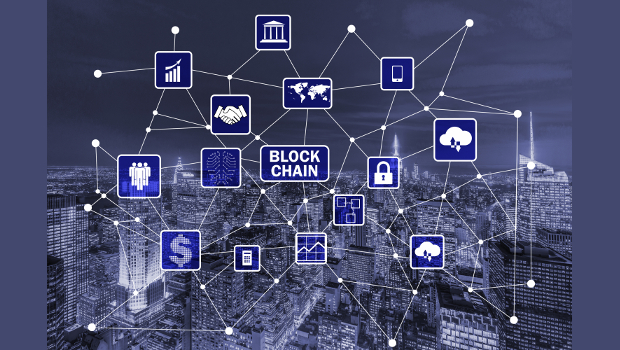Corporate activity around blockchain technology is ramping up significantly. From financial services to supply chain assurance, healthcare records and medtech, the technology is being explored and evaluated for a multitude of applications.
An antipodean ANZ bank group and Westpac have completed a trial of distributed ledger technology for the bank guarantee process used in commercial property leasing. Mastercard is launching its own blockchain network to enable partner banks and merchants to make cross-border payments faster and more securely.
There is obviously value in the blockchain but common myths persist that may yet undermine the technology. A group of Forrester analysts, led by Martha Bennett, has tackled these myths in a new report.
- The immutability myth
The term ‘immutable’ which in blockchain terms, means ‘can never be changed’ is technically impossible, the researchers said in the report.
There are two main ways changes can be made to the blockchain.
“One is to recompute the chain, either in its entirety or to the point before an undesirable event occurred; this erases and recreates history – in the early days of bitcoin, something like this happened,” said the analysts.
“The other is to fork the chain, which preserves the historical code and transactions, but means the software now works differently. The best-known example of this is likely to be the Ethereum fork that was introduced to deal with the DAO disaster.”
The researchers also said that from a technical perspective, permissioned blockchains are easier to change and have far fewer nodes than public blockchains, particularly in the early stages.
“This also makes them technically more vulnerable to being suborned by criminals or fraudsters that have credentials for the network. In practice, the security and governance mechanisms that apply to the network keep the risk in check.
“Ecosystem participants must be cognisant of the fact that it’s not the technology per se, that protects blockchain records from being changed, but how the network is designed, implemented, and run. This applies to networks with consensus mechanisms that support greater scalability, but which on their own may provide little or no protection against malicious attack,” the researchers said.
- The disintermediation and decentralisation myth
Cost reduction and increased efficiency are the key reasons why an organisation would want to move a process to a blockchain-based network, the researchers said.
“In many cases, this implies doing away with an existing intermediary – why, for example, process trades and transactions via third party when you can settle them directly between trading partners?” they said.
“There will no doubt be scenarios where this can be translated into reality. But it’s a fallacy to assume that there won’t be trusted intermediaries in blockchain networks or indeed that these networks are entirely decentralised.”
In practice, the researchers said they see blockchain networks will not fully disintermediate, they are distributed networks that retain a degree of centralisation, and there will be new intermediaries, and existing ones may change beyond recognition.
- The zero-trust myth
The two major blockchains, Bitcoin and Ethereum, have demonstrated that it is possible to exchange ‘value’ between people and entities that neither know nor trust each other, the researchers said.
“But they’ve also shown that it’s a myth. Neither network is completely trustless. Participants must place their trust in the continued functioning of these networks and they must do so at many levels. For example, they need to trust the mathematics and cryptography as well as the code will always function as intended,” the researchers said.
- The blockchains are truth machines myth
Many uses cases for blockchain-based networks promise to prevent fraud and ensure the provenance of goods in the physical and digital world, the researchers said.
“To a certain degree that’s a fair claim, in that blockchain-based transactions are extremely difficult to tamper with, and it’s obvious when an attempt has been made. But no technology, blockchain or otherwise, may act as a deterrent in some cases,” they said.
“However, it’s essential to bear in mind that just because it’s on the blockchain doesn’t mean it’s true, blockchains on their own cannot guarantee provenance of physical goods, and pure tracking cases must be separated from those requiring proof of provenance.”
- The transparency myth
Making transactions more transparent is a key benefit of blockchain-based networks, the researchers said.
“But for most enterprises, transparency is a much of a curse as a blessing. Aside from solving scale issues, addressing the need for confidentiality is the biggest technical challenge developers need to resolve,” they said.
CIOs need to keep in mind that in a typical blockchain stack, all on-chain content is visible to all participants; and preserving data privacy and commercial transparency and traceability are not the same as proof of provenance or integrity; and business executives need to agree on confidentiality requirements before selecting technology, the researchers said.
- The smart contract myth
For many organisations, smart contracts are ‘a’ or even ‘the’ main reason for embarking on a blockchain journey, the researchers said.
“But you need to understand what they are and the context in which they operate,” they said.
Smart contracts are all about process automation, they encapsulate business rules in code – events trigger them to carry out functions that trigger other events, the researchers said.
“And by definition, a smart contract can only be as good as the person or team who devised the rules and the programmers who translated them into code,” they said.
Smart contract also still require real-world contracts to be legally binding and enforceable.
“Despite what many blockchain supports may say, code is not law, the law is the law. Even if participants in a blockchain network may wish to abide by the results of a smart contract extension, they will still need a separate legal agreement that states as much and captures other standard contractual principles.”
IDG News Service








Subscribers 0
Fans 0
Followers 0
Followers